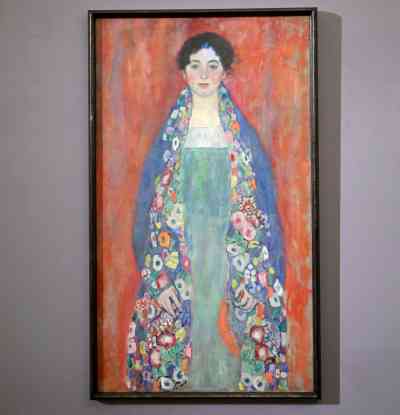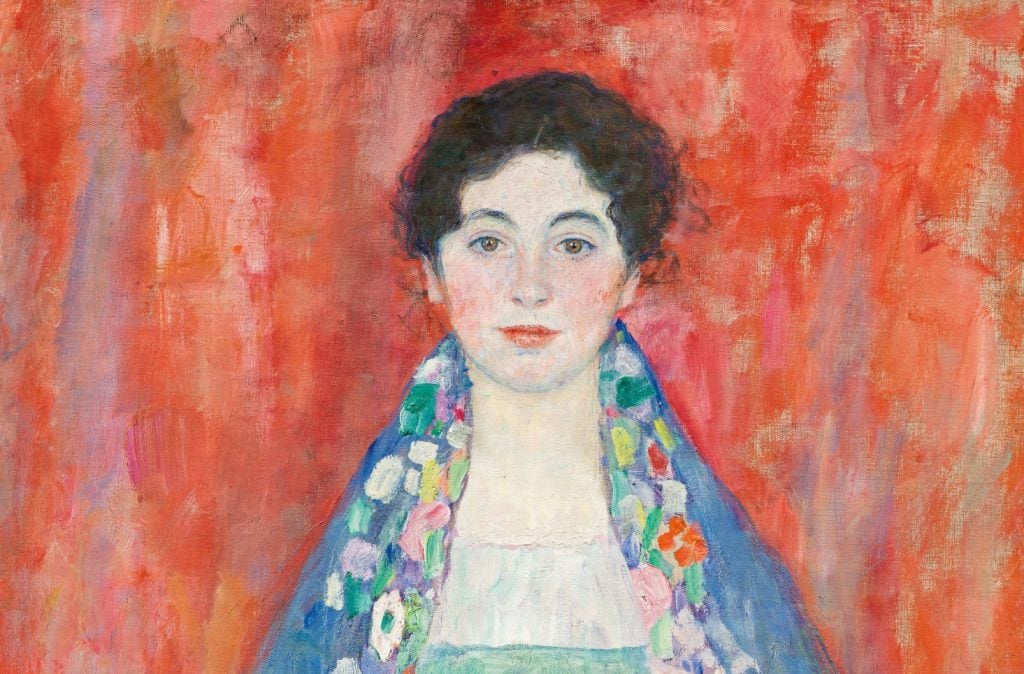Gustav Klimt’s long-thought-to-be-lost portrait of a young woman brought in $32 million on Wednesday at an auction in Vienna.
One of the last pieces created by the Austrian modernist artist, “Portrait of Fräulein Lieser” was begun in 1917, the year before he passed away. The sale price was at the lower half of an anticipated range of 30–50 million euros, with bidding beginning at 28 million euros.

An unidentified bidder from Hong Kong won the artwork.
“A painting of such rarity, artistic significance, and value has not been available on the art market in Central Europe for decades,” according to the Im Kinsky auction house.
The vibrantly colored artwork was put up for auction on behalf of its current owners, Austrian private citizens whose identities were kept a secret, as well as the legitimate heirs of Adolf and Henriette Lieser, affluent Jewish clients of Klimt’s who were thought to have commissioned the painting.
According to some scholars, the woman depicted in the picture might have been one of the family’s multiple ladies. It’s still unclear exactly who “Fräulein Lieser” is.
According to the auction house, Klimt invited the woman in the portrait to stand for him nine times.
When Klimt passed away in his studio at the beginning of 1918 from a stroke, he had left the painting mostly completed. According to the auction company, it was then given to the family that had commissioned it.
After 1930, the Jewish family left Austria and lost the majority of their belongings.
The painting’s exact fate is unknown between 1925 and the 1960s, while the Nazi government was in effect. Nazi Germany seized Austria in 1938. The only piece of information is a black-and-white photograph of the portrait, which was probably shot in 1925 and had the notation, “1925 in possession of Mrs. Lieser, IV, Argentinierstrasse 20.”
Up until its resurgence in early 2024, the painting was believed to have been privately owned by a collector for many years, but no additional evidence of its existence could be found.
According to the auction company, there isn’t any proof that the painting was taken during the Nazi era, but there is also no confirmation that it wasn’t. Through three successive inheritances, the current owners are the ones who ended up with it.
“Every form of taking away during the Nazi time has to be treated as unlawful,” stated Ernst Ploil, co-chief executive of the Im Kinsky auction house, as reported by the New York Times.
Given the ambiguity, a deal was negotiated to proceed with the sale under the Washington Principles, which were formulated in 1998 to help resolve concerns pertaining to the restitution of Nazi-confiscated art, with the present owners and the heirs of the Liesers.
The auction company expressed its happiness with Wednesday’s outcome.
The sale price set a record for Austrian art auctions. In 2010, a piece by Frans Francken the Younger brought in slightly over 7 million euros, the highest price ever paid at an auction in the nation.











